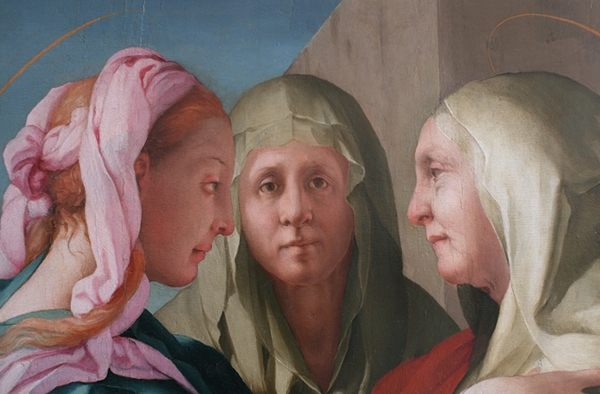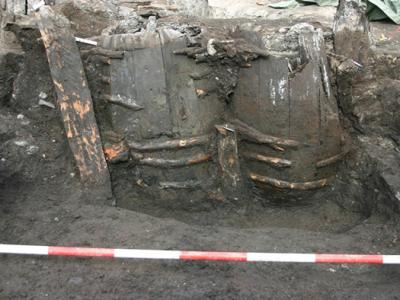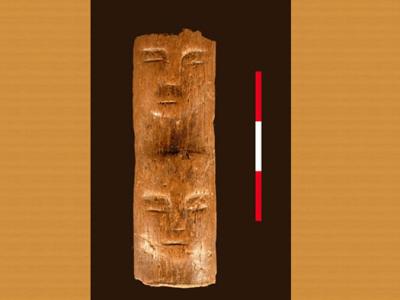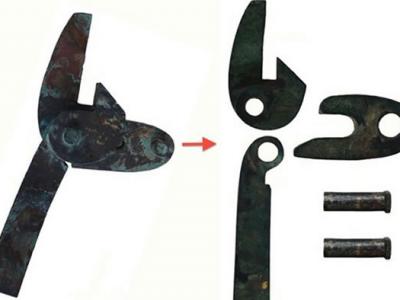16th-Century Masterpiece Reveals Cheese Glue Recipe
Sticky cheese might be the secret behind one of the most intriguing Mannerist paintings, according to a preliminary investigation carried out during restoration work.
Restorers had wondered what holds together the five poplar wood planks which make up “Visitation,” an enigmatic work by the 16th-century Mannerist Jacopo Pontormo.
“We believe they were pieced together with a caseine-based glue,” restorer Daniele Rossi told Discovery News. Caseine is a group of proteins commonly found in mammalian milk.
“Cheese glue was very popular at that time, and was normally used to join wood planks. We are going to carry out special chemical analyses for bindings to get a definitive answer,” Rossi said.
Described in the 16th-century Compendium of Rational Secrets as a “great secret of nature, a “super glue which withstands dampness and heat,” cheese glue was already detailed in the artists’ manuals of both Theophilus, a 12th-century German monk and 15th-century Italian painter Cennino Cennini.
The recipe for the potent adhesive relied on polypeptide casein protein molecules, and included ingredients such as hot water and quicklime. The goat or cow cheese-based concoction resulted in a sticky and thick compound which dried hard as stone, making it extremely hard for wood joints to separate.
“Whatever glue was used there, it was a powerful one. It’s still holding after five centuries,” Rossi said.
The source of inspiration for “The Greeting,” a video installation presented at the 1995 Venice Biennial by the Italian American artist Bill Viola, the dream-like Visitation is now the centerpiece of an exhibition on Mannerist artists Jacopo Carucci, also known as Pontormo (1494-1557), and Giovan Battista di Jacopo, a.k.a. Rosso Fiorentino (1494-1540) which runs in Florence through July 20.
Pontormo was one of the last artists of the Florentine Renaissance. He was a pupil of Leonardo da Vinci and Andrea del Sarto, and one of the earliest of the Mannerist school, a style of art developed in Italy following the High Renaissance, which emphasized mental conception over realistic depiction.
Pontormo completed the Visitation around 1528-1529, but the oil painting remained almost unknown until 1904, when it was rediscovered in the church of San Michele in Carmignano, a village west of Florence, and attributed to Pontormo.
The painting depicts in an almost metaphysical way the biblical meeting of the Virgin Mary, pregnant with Jesus, and Elisabeth, pregnant with St. John the Baptist. Staring fixedly into space, two statuesque figures in the background represent their alter egos.
The younger of the two wears the same color clothing of the Virgin Mary, but reversed. The older one appears to be Elizabeth shown in a sort of doubling.
“This intensely abstract atmosphere is sustained by the disproportionate size of the figures in comparison to the Florentine architectural backdrop and by the artist’s multiplication – as though in a mirror – of the number of figures witnessing the scene,” art critic Antonio Geremicca wrote in the exhibition catalog.
“These figurative devices make it more complicated to interpret the painting, whose significance scholars have yet to fathom in full,” he added.
Rossi’s restoration might help acquire new clues.
In addition to finding the super glue, the restorer filled 1,673 woodworm holes and removed the heavy repainting of past restorations. Incisive, luminous colors which previous interventions covered with a yellow varnish, re-emerged in full glory.
“We discovered a bright blue sky beneath a black overpainting that had made it almost overcast, and Pontormo’s clouds are white and ragged,” Rossi said.
Previously unseen details were also unveiled.
“A woman is leaning out of a window and a white cloth is falling from a window ledge. A smiling donkey peeks out from behind the corner of a building, while two passers-by converse on a bench like masked mannequins,” Rossi said.
Image: Detail of The Visitation by Jacopo Pontormo. Credit: Daniele Rossi(Mar 26, 2014 10:18 AM ET // by Rossella Lorenzi)












